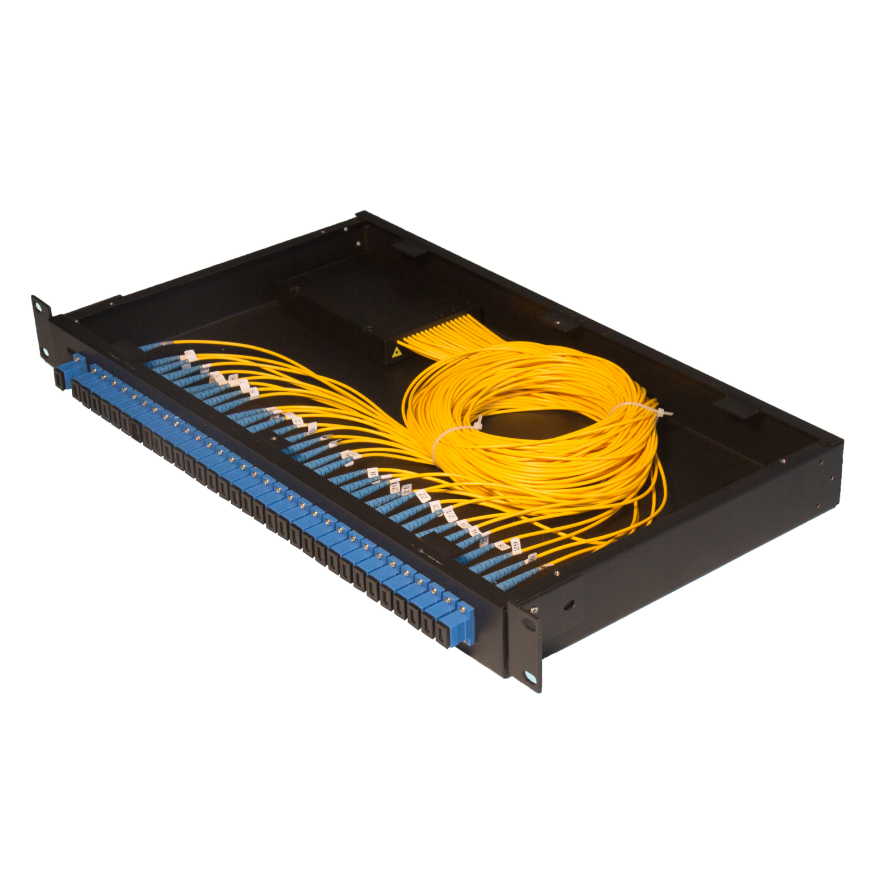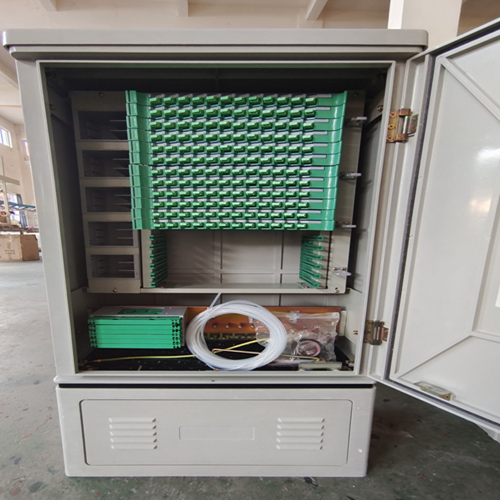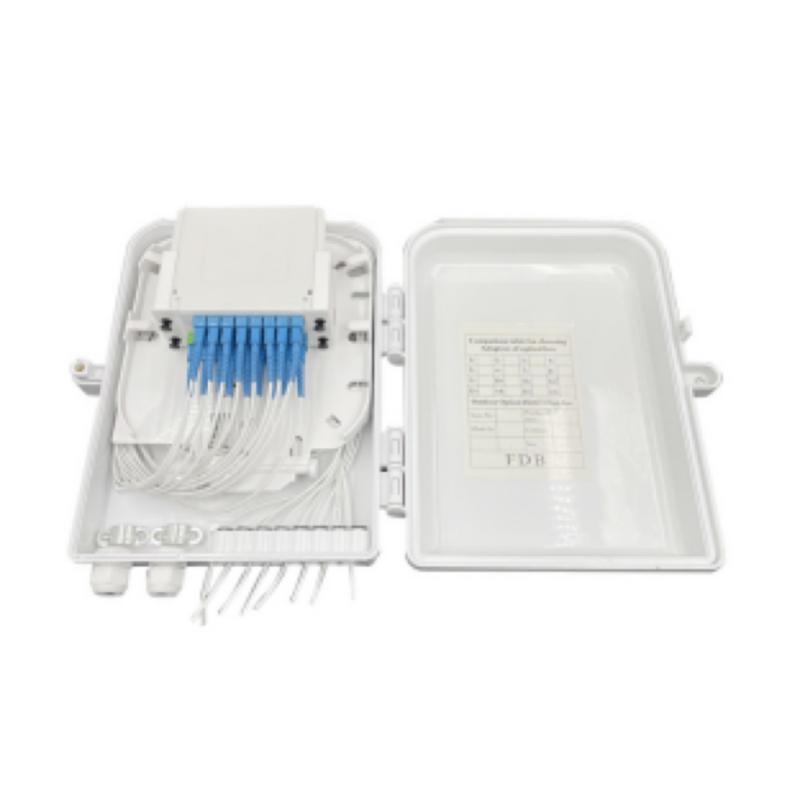SFP+ 80km Transceiver
10Gb/s BIDl 1550/1490nm
SFP+ 80km Transceiver
Product Description
PPB-5496-80B is hot pluggable 3.3V Small-Form-Factor transceiver module. It designed expressly for high-speed communication applications that require rates up to 11.1Gbps, it designed to be compliant with SFF-8472 and SFP+ MSA. The module data link up to 80km in 9/125um single mode fiber.
Product Features
1. Up to 11.1Gbps Data Links.
2. Up to 80km transmission on SMF.
3. Power dissipation<1.5W.
4. 1490nm DFB laser and APD receiver for FYPPB-4596-80B.
1550nm DFB laser and APD receiver for FYPPB-5496-80B
5. 6.2-wire interface with integrated Digital Diagnostic monitoring.
6. EEPROM with Serial ID Functionality.
7. Hot-pluggable SFP+ footprint.
8. Compliant with SFP+ MSA with LC connector.
9. Single + 3.3V Power Supply.
10. Case operating temperature: 0ºC ~+70ºC.
Applications
1.10GBASE-BX.
2.10GBASE-LR/LW.
Standard
1.Compliant with SFF-8472.
2.Compliant to SFF-8431.
3.Compliant to 802.3ae 10GBASE-LR/LW.
4.RoHS Compliant.
Pin Descriptions
|
Pin |
Symbol |
Name/Description |
NOTE |
|
1 |
VEET |
Transmitter Ground (Common with Receiver Ground) |
1 |
|
2 |
TFAULT |
Transmitter Fault. |
2 |
|
3 |
TDIS |
Transmitter Disable. Laser output disabled on high or open. |
3 |
|
4 |
MOD_DEF (2) |
Module Definition 2. Data line for Serial ID. |
4 |
|
5 |
MOD_DEF (1) |
Module Definition 1. Clock line for Serial ID. |
4 |
|
6 |
MOD_DEF (0) |
Module Definition 0. Grounded within the module. |
4 |
|
7 |
Rate Select |
No connection required |
5 |
|
8 |
LOS |
Loss of Signal indication. Logic 0 indicates normal operation. |
6 |
|
9 |
VEER |
Receiver Ground (Common with Transmitter Ground) |
1 |
|
10 |
VEER |
Receiver Ground (Common with Transmitter Ground) |
1 |
|
11 |
VEER |
Receiver Ground (Common with Transmitter Ground) |
1 |
|
12 |
RD- |
Receiver Inverted DATA out. AC Coupled |
|
|
13 |
RD+ |
Receiver Non-inverted DATA out. AC Coupled |
|
|
14 |
VEER |
Receiver Ground (Common with Transmitter Ground) |
1 |
|
15 |
VCCR |
Receiver Power Supply |
|
|
16 |
VCCT |
Transmitter Power Supply |
|
|
17 |
VEET |
Transmitter Ground (Common with Receiver Ground) |
1 |
|
18 |
TD+ |
Transmitter Non-Inverted DATA in. AC Coupled. |
|
|
19 |
TD- |
Transmitter Inverted DATA in. AC Coupled. |
|
|
20 |
VEET |
Transmitter Ground (Common with Receiver Ground) |
1 |
Notes:
1.Circuit ground is internally isolated from chassis ground.
2.TFAULT is an open collector/drain output, which should be pulled up with a 4.7k – 10k Ohms resistor on the host board if intended for use. Pull up voltage should be between 2.0V to Vcc + 0.3V.A high output indicates a transmitter fault caused by either the TX bias current or the TX output power exceeding the preset alarm thresholds. A low output indicates normal operation. In the low state, the output is pulled to <0.8V.
3.Laser output disabled on TDIS >2.0V or open, enabled on TDIS <0.8V.
4.Should be pulled up with 4.7kΩ- 10kΩ host board to a voltage between 2.0V and 3.6V. MOD_ABS pulls line low to indicate module is plugged in.
5.Internally pulled down per SFF-8431 Rev 4.1.
6.LOS is open collector output. It should be pulled up with 4.7kΩ – 10kΩ on host board to a voltage between 2.0V and 3.6V. Logic 0 indicates normal operation; logic 1 indicates loss of signal.
Pin Diagram

Absolute Maximum Ratings
|
Parameter |
Symbol |
Min. |
Typ. |
Max. |
Unit |
Note |
|
Storage Temperature |
Ts |
-40 |
|
85 |
ºC |
|
|
Relative Humidity |
RH |
5 |
|
95 |
% |
|
|
Power Supply Voltage |
VCC |
-0.3 |
|
4 |
V |
|
|
Signal Input Voltage |
|
Vcc-0.3 |
|
Vcc+0.3 |
V |
Recommended Operating Conditions
|
Parameter |
Symbol |
Min. |
Typ. |
Max. |
Unit |
Note |
|
Case Operating Temperature |
Tcase |
0 |
|
70 |
ºC |
Without air flow |
|
Power Supply Voltage |
VCC |
3.13 |
3.3 |
3.47 |
V |
|
|
Power Supply Current |
ICC |
|
|
520 |
mA |
|
|
Data Rate |
|
|
10.3125 |
|
Gbps |
TX Rate/RX Rate |
|
Transmission Distance |
|
|
|
80 |
KM |
|
|
Coupled Fiber |
|
|
Single mode fiber |
|
9/125um SMF |
|
Optical Characteristics
|
Parameter |
Symbol |
Min. |
Typ. |
Max. |
Unit |
Note |
|
|
Transmitter |
|
|
|
||
|
Average Launched Power |
POut |
0 |
- |
5 |
dBm |
|
|
Average Launched Power (Laser Off) |
Poff |
- |
- |
-30 |
dBm |
Note (1) |
|
Center Wavelength Range |
λC |
1540 |
1550 |
1560 |
nm |
FYPPB-5496-80B |
|
Side mode suppression ratio |
SMSR |
30 |
- |
- |
dB |
|
|
Spectrum Bandwidth(-20dB) |
σ |
- |
- |
1 |
nm |
|
|
Extinction Ratio |
ER |
3.5 |
|
- |
dB |
Note (2) |
|
Output Eye Mask |
Compliant with IEEE 802.3ae |
|
|
Note (2) |
||
|
|
Receiver |
|
|
|
||
|
Input Optical Wavelength |
λIN |
1480 |
1490 |
1500 |
nm |
FYPPB-5496-80B |
|
Receiver Sensitivity |
Psen |
- |
- |
-23 |
dBm |
Note (3) |
|
Input Saturation Power (Overload) |
PSAT |
-8 |
- |
- |
dBm |
Note (3) |
|
LOS -Assert Power |
PA |
-38 |
- |
- |
dBm |
|
|
LOS -Deassert Power |
PD |
- |
- |
-24 |
dBm |
|
|
LOS -Hysteresis |
PHys |
0.5 |
- |
5 |
dB |
|
Note:
1.The optical power is launched into SMF
2.Measured with RPBS 2^31-1 test pattern @10.3125Gbs
3.Measured with RPBS 2^31-1 test pattern @10.3125Gbs BER=<10^-12
Electrical Interface Characteristics
|
Parameter |
Symbol |
Min. |
Typ. |
Max. |
Unit |
Note |
|
Total power supply current |
Icc |
- |
|
520 |
mA |
|
|
Transmitter |
||||||
|
Differential Data Input Voltage |
VDT |
180 |
- |
700 |
mVp-p |
|
|
Differential line input Impedance |
RIN |
85 |
100 |
115 |
Ohm |
|
|
Transmitter Fault Output-High |
VFaultH |
2.4 |
- |
Vcc |
V |
|
|
Transmitter Fault Output-Low |
VFaultL |
-0.3 |
- |
0.8 |
V |
|
|
Transmitter Disable Voltage- High |
VDisH |
2 |
- |
Vcc+0.3 |
V |
|
|
Transmitter Disable Voltage- low |
VDisL |
-0.3 |
- |
0.8 |
V |
|
|
Receiver |
||||||
|
Differential Data Output Voltage |
VDR |
300 |
- |
850 |
mVp-p |
|
|
Differential line Output Impedance |
ROUT |
80 |
100 |
120 |
Ohm |
|
|
Receiver LOS Pull up Resistor |
RLOS |
4.7 |
- |
10 |
KOhm |
|
|
Data Output Rise/Fall time |
tr/tf |
|
- |
38 |
ps |
|
|
LOS Output Voltage-High |
VLOSH |
2 |
- |
Vcc |
V |
|
|
LOS Output Voltage-Low |
VLOSL |
-0.3 |
- |
0.4 |
V |
|
Digital Diagnostic Functions
PPB-5496-80B transceivers support the 2-wire serial communication protocol as defined in the SFP+MSA.
The standard SFP serial ID provides access to identification information that describes the transceiver’s capabilities, standard interfaces, manufacturer, and other information.
Additionally, OYI’s SFP+ transceivers provide a unique enhanced digital diagnostic monitoring interface, which allows real-time access to device operating parameters such as transceiver temperature, laser bias current, transmitted optical power, received optical power and transceiver supply voltage. It also defines a sophisticated system of alarm and warning flags, which alerts end-users when particular operating parameters are outside of a factory set normal range.
The SFP MSA defines a 256-byte memory map in EEPROM that is accessible over a 2-wire serial interface at the 8 bit address 1010000X (A0h).The digital diagnostic monitoring interface makes use of the 8 bit address 1010001X (A2h), so the originally defined serial ID memory map remains unchanged.
The operating and diagnostics information is monitored and reported by a Digital Diagnostics Transceiver Controller (DDTC) inside the transceiver, which is accessed through a 2-wire serial interface. When the serial protocol is activated, the serial clock signal (SCL, Mod Def 1) is generated by the host. The positive edge clocks data into the SFP transceiver into those segments of the E2PROM that are not write-protected. The negative edge clocks data from the SFP transceiver. The serial data signal (SDA, Mod Def 2) is bi-directional for serial data transfer. The host uses SDA in conjunction with SCL to mark the start and end of serial protocol activation.
The memories are organized as a series of 8-bit data words that can be addressed individually or sequentially.
Recommend Circuit Schematic

Mechanical Specifications (Unit: mm)

Regulatory Compliance
|
Feature |
Reference |
Performance |
|
Electrostatic discharge(ESD) |
IEC/EN 61000-4-2 |
Compatible with standards |
|
Electromagnetic Interference (EMI) |
FCC Part 15 Class B EN 55022 Class B (CISPR 22A) |
Compatible with standards |
|
Laser Eye Safety |
FDA 21CFR 1040.10, 1040.11 IEC/EN 60825-1,2 |
Class 1 laser product |
|
Component Recognition |
IEC/EN 60950 ,UL |
Compatible with standards |
|
ROHS |
2002/95/EC |
Compatible with standards |
|
EMC |
EN61000-3 |
Compatible with standards |
If you're looking for a reliable, high-speed fibre optic cable solution, look no further than OYI. Contact us now to see how we can help you stay connected and take your business to the next level.

 0755-23179541
0755-23179541  sales@oyii.net
sales@oyii.net






